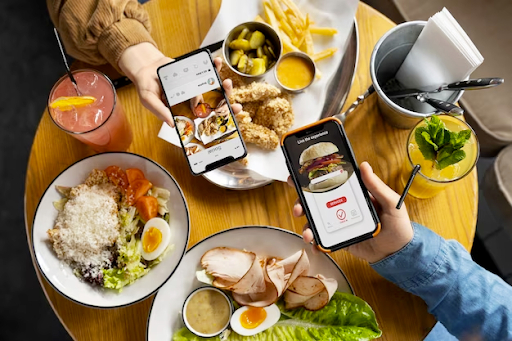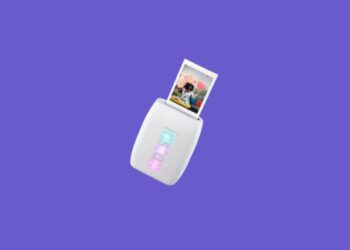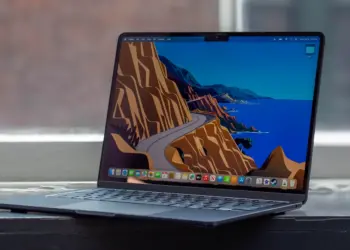As the virus spreads far and wide, caution is the new rule. And we must all adjust to this in order to live happy, safe lives! In such a case, internet food delivery app have proven to be beneficial. People all throughout the world have grown accustomed to seeing a no-entry sign outside their favorite cafés, shuttered bars and taverns, and no dine-in restaurants.
By securely delivering deliciousness with a single tap, these applications are not only becoming user favorites but also providing a significant return on investment for food delivery businesses and app owners. This, in turn, is attracting numerous entrepreneurs to invest in meal delivery app development.
However, to compete in the food delivery business, which is already dominated by giants such as Zomato, Grubhub, and Deliveroo, your app must provide a frictionless meal delivery experience as well as clever features to attract users and gain market share.
Our last article discussed how to start investing in the food delivery app development market. In this one, we’ll discuss some unique, intriguing, and out-of-the-box characteristics of food delivery platforms that have an impact on users in this sector.
10 Features for Developing Outstanding Food Delivery Apps
1. Easy App Onboarding
While app onboarding is an essential component of every app, it is especially important in the food delivery industry. Imagine how you feel when you’re hungry.
Let us explain: enthusiastic, eager, and impatient. Aren’t we correct?
This is also true for meal delivery app consumers. When users download the app (with hunger in mind) and discover that the registration process is far too cumbersome and time-consuming, they contemplate ordering through alternative apps rather than filling out lengthy forms.
Thus, when customers download a new app to order meals, you should not ask them to fill out a long form with innumerable inquiries such as their name, age, address, and other personal information. Make it easier for them to open and use the app.
Allowing consumers to sign up with a simple tap using Facebook or Twitter immediately satisfies them. It encourages them to use the application feature rather than wasting time on the lengthy registration process.
On the other side, if you want to keep things professional by not integrating social media with your meal-ordering software, simply asking for a name and telephone number should suffice. It is preferable to avoid complicating matters for users by requiring them to generate complex usernames.
2. Push notifications.
If implemented correctly, push notifications can elevate your meal-ordering app to new heights. Remember, the competition in the food delivery app market is fierce, and in order to capture customers’ attention, you must provide some incredible features, one of which is push notifications.
It assists organizations in staying connected with their clients while also increasing app engagement rates. You can use push notifications to send a wide range of information, including discounts, offers, location-based order dropped alerts, and so on.
However, while sending push notifications, make sure that the material adds value to the users, and don’t merely send plain text advertising messages to increase orders.
Try to use push notifications in a way that will help your business application expand significantly. You can tell your users about loyalty programs, the latest promotions, and restaurant offers on a regular basis to keep their attention. However, make sure not to overdo it and often disturb users.
3. Loyalty Programs and Discount Deals
Gamification is an essential element for your online meal delivery service if you want to boost client loyalty, improve income, and raise brand exposure.
Furthermore, you should never forget to attract new clients to your food app by providing them with unique deals, discounts, and promotions. According to research, over 40% of food delivery app customers use these applications to get bargains and discounts, while approximately 20% use these apps just to collect loyalty points.
Thus, the statistics demonstrate why it is an excellent strategy for bringing new clients to your app.
It is critical to attract potential users in order to gain brand loyalty and ultimately increase brand exposure. That’s why big brands prioritize in-app marketing features. Starbucks, for example, successfully raised their sales by 80% after using reward programs. The brand attributes 40% of its entire sales to this program.
4. Real-time tracking
Integrating this feature into your app is like hitting two birds with one stone. First, it will allow your enthusiastic customers to track the whereabouts of their orders using real-time GPS. Second, it will assist your drivers in determining the best path to reach the users’ doorsteps as soon as possible, saving them time and gasoline, hence lowering delivery costs.
If you incorporate this functionality into your app, you (admin) and your users will be able to simply follow the location and movements of delivery staff in-app. Google Maps, Waze’s Navigation, and MapKit are three excellent APIs for integrating this feature into your meal delivery service.
5. Geo-fencing or integration with beacons
Your service is worthless nowadays if it is not marketed. And if you intend to enter a competitive market, you should make every effort to establish your presence there.
This is where incorporating location-based services into meal-ordering apps comes into play. The adoption of technology such as geofencing and beacons has enabled marketers to communicate with their customers even before they are aware of the brand.
Similarly, with your food-ordering applications, you may utilize this feature to promote specific restaurants that will compensate you for doing so. In addition to providing excellent customer service, you may monetize your meal-ordering apps by utilizing this function.
Consider giving fliers to passers-by to promote your services and restaurant specials, which results in a win-win situation for all players involved with the delivery platform. You must employ a current marketing strategy to take your food business to the next level.
6. Easy Payment Options
While food ordering applications help customers avoid long queues in front of restaurants, the ability to pay within an app enhances their experience by providing greater convenience.
So, in order to keep your consumers engaged, you must make the payment process as simple as possible by offering them all payment alternatives within the app.
You should include as many payment methods as feasible in your app to give your users a flawless food ordering experience. For example, credit or debit cards, PayPal, Google Pay, Amazon Pay, online banking, cash on delivery, and so on.
7. Personalization.
Personalization has emerged as a notable feature in on-demand applications nowadays.
In this feature, the application monitors and analyzes the user’s in-app activity, recommending services and products based on what they enjoy or are likely to purchase.
It aids in attracting and retaining app users. It also improves user retention because they obtain what they need with the least amount of effort.
With customization, you eliminate the need for customers to repeatedly browse their preferred café or cuisine.
8. ChatBot Integration
Consider having someone who knows all of your food preferences and recommends meals for you to eat on a daily basis. Wouldn’t that be fantastic?
The chatbot works in the same manner for your users. While it is a relatively new technology, many entrepreneurs are utilizing it to provide individualized services to their clients. A chatbot is an AI-powered computer program that mimics human speech to answer basic questions such as “What’s the best restaurant in town?”
With AI, chatbots are no longer limited to answering basic questions. They can literally help consumers find what they’re looking for. Instead, they have taken personalization to the next level. Furthermore, integrating this functionality can help your software stand out from the competition.
9. Contactless Drop-offs
Given the current situation, where everyone is frightened of contracting the virus, it is essential to have a contactless delivery option in your mobile app.
Leaving food packets on doorsteps or emailing your driver an image of where you want your meal delivered are the emerging ways that people prefer to receive orders these days. Consider implementing this feature if you intend to launch your app shortly.
10. Reviews and Ratings.
User feedback is the simplest and most effective technique to gain insights about how to enhance your program. It is also critical to review and roll out significant features in your application on a regular basis in order to stay competitive.
Also, who better to recommend modifications than your own customers to improve your app? That is why it is critical to include this framework in your app so that your consumers can share their feedback with you.
Conclusion
Though the food delivery industry is exciting and full of chances for new entrepreneurs, capturing a part of the market requires a feature-rich and seamlessly executed service. Keep in mind that users have other options, so they will only utilize your app if it offers something unique.
So, when developing a meal delivery app, the first thing you need to do is consider your unique selling point. Whether you’re a budding entrepreneur looking to launch your food delivery app in the market or a food business owner looking to increase sales, customer retention, or brand awareness, launching an app with the aforementioned features will allow you to elevate your users’ experience and achieve your business goals.
Read Also: Kraft Boxes










